#Combating Desertification and Drought
Text
Combating land degradation
Land is a vital resource to humankind, like air and water. Land degradation—the progressive deterioration or loss of the productive capacity of soils for present and future—is a global challenge that is intimately linked to key aspects of human security and well-being: food, jobs, health, and livelihoods. Land degradation affects everyone but most especially the poor and vulnerable through food insecurity, higher food prices, climate change, environmental hazards, and the loss of biodiversity and ecosystem services.

Comprehensive landscape approaches are the best way to address the broad, multi-faceted nature of land degradation across the range of agro-ecological and climatic zones. The GEF’s investments seek to address drivers of degradation through a holistic approach that delivers multiple benefits in reducing and reverting land degradation, conserving biodiversity, and mitigating and adapting to climate change. Therefore, GEF-funded projects and programs emphasize innovative and integrated approaches to sustainable land management (SLM). Such approaches can be scaled up to maximize global benefits for the environment. At the same time, they can help address issues related to biodiversity and climate change, and improve local livelihoods
#sustainable land management (slm)#agroecology#Global Environment Facility (GAF)#combating desertification and drought#land degradation
0 notes
Text

Contemplating the climate in a dry well.
©Robin Fifield 2023.
#robin fifield photography#photographers on tumblr#awehaven#andalucia#andalucia nature#climate change#water#drought#world day to combat desertification and drought
20 notes
·
View notes
Text
Raise global awareness of the growing health and environmental challenges posed by Sand and Dust Storms.

On 12 July, the world commemorates the first International Day of Combating Sand and Dust Storms (SDS), which aims to raise global awareness of the growing health and environmental challenges posed by SDS.
The commemoration follows a resolution adopted by the General Assembly on June 8, 2023. Events are held around the world to highlight the urgency of this environmental crisis, largely caused by human-induced climate change, desertification, land degradation and drought.
The “Commemoration of the International Day of Combatting Sand and Dust Storms” event, co-organized by the Permanent Missions of Iraq, the Islamic Republic of Iran, and Senegal at the United Nations in New York, features various speakers from organizations collaborating in the UN SDS Coalition. At the same time, the World Meteorological Organization (WMO) hosts a series of regional webinars bringing together stakeholders from different regions.
The UNCCD will launch the SDS toolbox on this day.
#Sand and Dust Storms#International Day of Combatting Sand and Dust Storms#12 july#severe sand#dust storms#land productivity#land degradation#loss of biodiversity#United Nations Convention to combat desertification and Drought#UNCCD
0 notes
Text

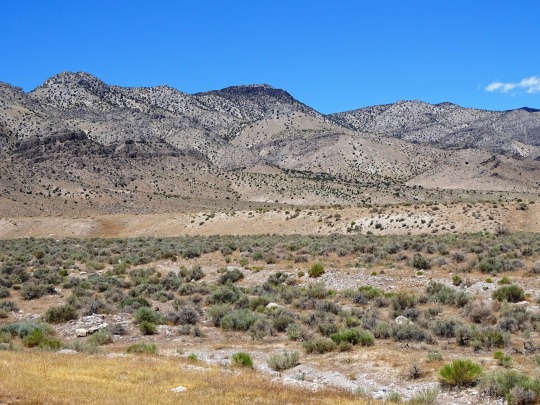
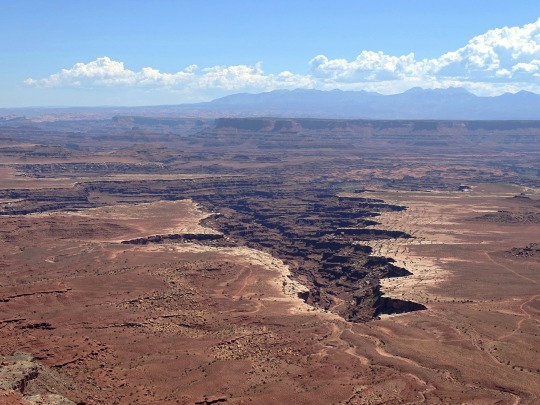

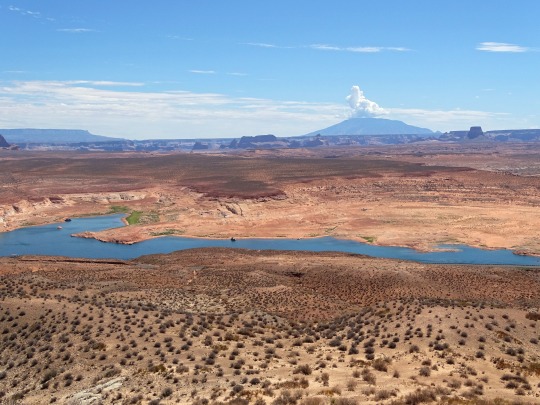

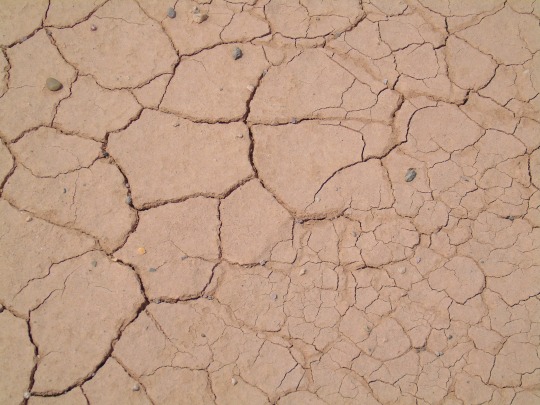



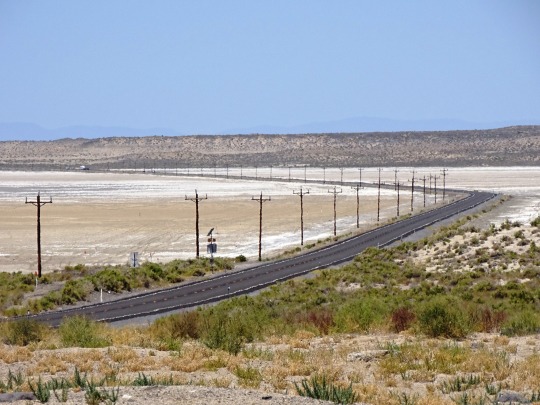


World Day to Combat Desertification and Drought
World Day to Combat Desertification and Drought arises on June 17 of every year. The primary purpose of the day is to highlight the ways to prevent desertification and recover from the drought. The day also aims to increase the visibility of the drylands issue on the environmental agenda. World Day to Combat Desertification and Drought is the perfect day to remind everybody that desertification can be efficiently tackled, that solutions are possible, and that key tools to this aim lay in strengthened community participation and co-operation at different levels.
“Without a long-term solution, desertification and land degradation will not only affect food supply but lead to increased migration and threaten the stability of many nations and regions. This is why world leaders made land degradation neutrality one of the targets of the Sustainable Development Goals.” – General Ban Ki-moon
History of World Day to Combat Desertification and Drought
In 1994, the United Nations General Assembly announced June 17 as the World Day to Combat Desertification and Drought. The assembly recognized that desertification and drought were the main global problems as they affect all regions of the world. The meeting also realized that joint action by the international community was required to combat desertification and drought, particularly in Africa. The States were asked to devote the World Day to promoting awareness of the necessity for international participation to combat desertification and the effects of drought and also the implementation of the Convention to Conflict Desertification. After then, the country parties to the UNCCD (United Nations Convention to Combat Desertification), stakeholders and non-governmental organizations to celebrate the World Day to Combat Desertification and Drought with some Worldwide activities on June 17 each year.
Themes of World Day to Combat Desertification and Drought
The past Themes of World Day to Combat Desertification and Drought are listed below
2003: International Year of Deserts and Desertification (IYDD).
2004: Social Dimensions of Desertification: Migration and Poverty.
2005: Women and Desertification.
2006: The Beauty of Deserts – The Challenge of Desertification.
2007: Desertification and Climate Change – One Global Challenge.
2008: Combating land degradation for sustainable agriculture.
2009: Conserving land and energy = Securing our common future.
2015: Attainment of food security for all through sustainable food systems.
2016: Inclusive cooperation for achieving Land Degradation Neutrality.
2017: Link between land degradation and migration.
2018: Land has true value. Invest in it.
2019: Let’s Grow the Future Together
2020: Food. Feed.Fibre. – the links between consumption and land.
2021: Restoration, Land, and Recovery.
2022: Rising from drought together.
How to celebrate World Day to Combat Desertification and Drought
On World Day to Combat Desertification and Drought, promotional events may include the distribution of awareness raising materials, like fact sheets, calendars, posters, and postcards, to educational organizations and the general public. The day also features the educational case studies, forums or discussions on drought and desertification, its associations with society and steps to minimize the problem.
Source
#Kaan Paachihpi#Montezuma County#Arches National Park#Canyonlands National Park#Utah#Colorado#usa#original photography#travel#tourist attraction#landscape#desert#Monument Valley Navajo Tribal Park#Glen Canyon National Recreation Area#Nevada#World Day to Combat Desertification and Drought#17 June#DayToCombatDesertificationAndDrought#summer 2022
0 notes
Text

#World Day to Combat Desertification and Drought#brainchecker#WorldDaytoCombatDesertificationandDrought#2023#india
0 notes
Text
Droughts may affect more than 75% of world’s population by 2050
New Post has been published on https://www.timesofocean.com/droughts-may-affect-more-than-75-of-worlds-population-by-2050/
Droughts may affect more than 75% of world’s population by 2050
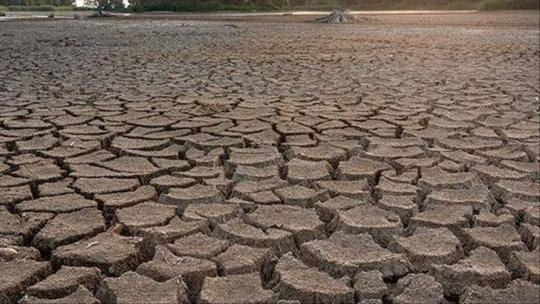
World (The Times Groupe)- Drought could affect three-quarters of humanity by 2050, the UN warned Friday as it observed World Day to Combat Desertification and Drought.
The day, which has been observed annually since 1995, aims to change public attitudes toward the leading cause of desertification and land degradation.
The theme of this year’s conference is “Rising up from drought together,” which emphasizes the need for early action to prevent disastrous consequences for humanity and the environment.
In the wake of global warming and vanishing water resources, drought is on the rise worldwide according to data compiled by Anadolu Agency from scientific findings and reports by international institutions.
According to a report by the World Meteorological Organization (WMO) in 2021, droughts have increased by 29% since 2000.
UNICEF predicts that one in four children will live in drought-hit areas by 2040.
From 1900 to 2019, 11.7 million people have died from drought-related causes, while Africa has suffered 134 droughts in the last two decades more than any other continent.
Europe has experienced 45 droughts in the last decade. Europe has been hit with a cost exceeding $27 billion, with 15% of its land and 17% of its population being affected.
The damage caused by drought only to agricultural products in the United States has reached $250 billion in the past century.
After floods, drought is the most frequent natural disaster that affects humans worldwide, reducing India’s gross domestic product by 2 to 5%. In Australia, drought has reduced agricultural production by 18% since 2000.
Somalia, Zimbabwe, Djibouti, Mauritania and South Africa are among the countries most at risk from drought. un
#All news about Drought#Anadolu Agency#Drought news and latest updates#Droughts#Droughts threaten sustainable development#Earth & Climate News#land degradation#Latest news on environment#Reporting on Global Disasters#The Times Groupe#Times Of Ocean#Unravel News#World Day to Combat Desertification and Drought#World Meteorological Organization (WMO)#world news#world’s population by 2050#World
0 notes
Text

World Day to Combat Desertification and Drought
#World#Day#Combat#Desertification#Drought#Skills#Development#Classes#Guru#Shishya#Talent#Academy#GarvebhaviPalya#Bangalore
0 notes
Text

World Day to Combat Desertification and Drought
0 notes
Text
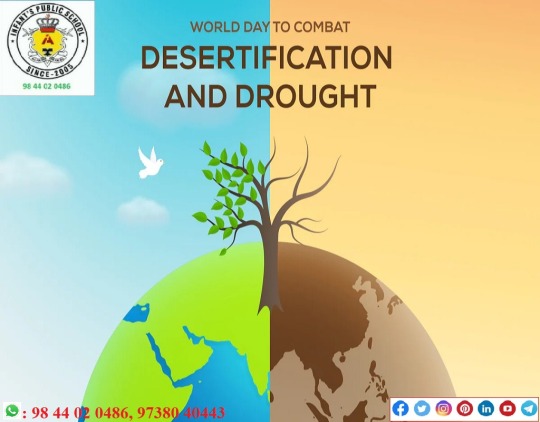
World Day to Combat Desertification and Drought
#World#Day#Combat#Desertification#Drought#Infants#public#School#Summer#Camp#Activities#GarvebhaviPalya#Bangalore
0 notes
Text
In some ways, the do-nothing lawn care movement is very good for undoing the affects of golf monoculture, but it doesn’t help all the time. In areas undergoing desertification [and no, not a natural shift into a desert climate, but a consequence of unnatural droughts and so on], doing nothing will make it worse. This can be combatted with tree walls and planting flora that are capable of removing heavy metals from soil, which are things that require active stewardship.
Additionally, while ecological succession can and does occur without human interference at all, it will take a long time for it to be able to combat a golf monoculture. Pioneer species will arrive in a matter of months, but the intermediate species needed to progress into the climax community will take years or even decades without human interference in this state of society. It might not even be possible in some areas due to the local extinction of wildlife populations that transport seeds or pollinate those intermediate species. People need to be actively taking care of the land and introducing intermediate plant species to their do-nothing lawns to sooner progress back into the natural environment.
In some places, it might not even be safe to do nothing. For example, in Connecticut, America, long grasses are the perfect home for ticks that carry Lyme Disease, and yet these long grasses are part of ecological succession and advancing towards the climax community. Lyme is a serious illness and the ticks exist in such a large population that it is a significant danger to human life to enable any more population growth. In a location like that, it is safer to focus on reintroducing and increasing the populations of tick predators and predators that target common tick hosts in order to reduce the risk of Lyme before attempting to kickstart ecological succession.
6 notes
·
View notes
Text
CLIMATEWIRE | Women in much of the world are more prone than men to shocks related to drought and desertification because of systemic sexism, according to a U.N. report.
That’s due largely to a lack of land rights and social equity that excludes women from accessing capital, training, technical assistance and the halls of power.
Commissioned by the United Nations Convention to Combat Desertification, the report finds that women who often engage in agricultural practices are not recognized as farmers because of gender norms. That restricts their access to finance, information and services needed to protect them against climate-related damages like drought.
Without land titles or assets that can serve as collateral, women struggle to secure loans and credit that can help them recover from climate-related damages, the report notes. And without access to money and technology, women are less able to adopt sustainable land management practices that could help prevent additional climate damages or increase crop yields.
“Equitable land governance and land security tenure are critical to enabling land restoration efforts led by women,” the report states.
Women play a vital, though often unrecognized, role in the global food system. According to the Food and Agriculture Organization of the United Nations, women account for nearly half of agricultural employment across low-income countries, but much of that work is unpaid and involves excessive burdens.
"Women are major actors in the global efforts to reduce and reverse land degradation. They restore land, they protect land, they cherish, nourish and care for the land, while also caring for others,” Ibrahim Thiaw, executive secretary of the Convention to Combat Desertification, writes in the introduction to the report.
Gender discrimination and norms that don’t recognize their role can increase the burdens women face and the world’s ability to address increasing threats to land-based resources (Greenwire, April 27).
Take early warning systems. The report finds that climate forecasts that would help women prepare for drought are often shared in meetings that women can’t attend.
The disadvantages are not spread evenly across all genders, notes the study. Other aspects of identity such as ethnicity, income, marriage status, disability status and rural or urban location also play an important role, it says.
It also looks at the impacts on women’s health. In all regions, women do more caregiving than men, and drought and land degradation tend to increase the burden of their domestic work by forcing women to walk farther or wait in long lines to collect water, the report says.
“Women left to manage their households may lack the power to make timely farming decisions, or to respond to the effects of drought, land degradation and desertification, or extreme weather events,” the study notes.
In many countries, women are limited in their ability to access or own land, and in more than 100 countries, women are denied the right to inherit property belonging to their husbands due to religious, customary or traditional laws.
But even in countries where women’s legal rights to land are the same as men’s, farm ownership is still overwhelmingly in men’s hands. In Costa Rica, for example, only around 15 percent of farms are owned by women.
The lack of recognition of women farmers means they get less access to the training needed to respond to the effects of climate change on agriculture. At the same time, women are often not represented in international summits where equity issues should be addressed. Only 21 percent of delegates at the last summit for the Convention to Combat Desertification were women, the report said.
The nearly 200 countries that are parties to the Convention to Combat Desertification adopted a gender action plan in 2017 that acknowledges the important role women play in land restoration and sustainable land management practices, and the report offers recommendations for how women’s participation can be improved regionally and globally.
It also highlights examples of women who are leading innovative practices to reform land rights, sustainable agriculture and improving land-use technologies.
A women-led irrigation system in India, for example, helps store rainwater underground until it can be used during dry spells. A project in Benin, a nation in West Africa, uses solar power to help irrigate fields, freeing women from having to collect water by hand from rivers and aquifers.
Reprinted from E&E News with permission from POLITICO, LLC. Copyright 2022. E&E News provides essential news for energy and environment professionals.
#United Nations convention to combat desertification#Food and agriculture organization of the United nations#Women and agriculture#Women and food security
44 notes
·
View notes
Text
Harness the power of rain.
Rainwater harvesting and agro-ecological irrigation are building farmers' resilience to climate change in Senegal.
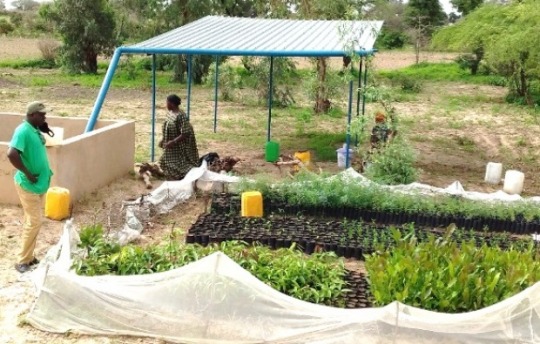
#agro-ecological irrigation#Rainwater harvesting#farmers' resilience#climate change#arid lands#world day to combat desertification and drought#17 june
3 notes
·
View notes
Text
Best 6 Rain Collection Tanks: Rainwater Harvesting
Are you looking for an easy way to sustainable without much effort? Maybe Rainwater Harvesting is for you!
Buyers Guide: How To Choose the Best Rain Collection Tanks
In today's rapidly changing climate, the importance of sustainable practices is more evident than ever. One such practice that has gained traction over the years is rainwater harvesting. But how do you choose the right tank for this purpose? Dive into this comprehensive guide to find out.
1. INTRODUCTION
A Glimpse into the World of Rain Collection
Rain, a free source of pure water, has been undervalued for years. With increasing water scarcity and environmental concerns, the significance of rain collection tanks has skyrocketed. These tanks not only serve as reservoirs for a rainy day (pun intended!) but also symbolize a step towards a sustainable future.
The Bigger Picture: Harvesting Rain, Harvesting Health
When we talk about rainwater harvesting, we're not just discussing water conservation. It's about creating a sustainable environment for our children and ensuring their health isn't compromised. Clean, untreated rainwater can be a boon for households, reducing reliance on chemically treated municipal supplies.
2. THE ENVIRONMENTAL IMPACT OF RAIN COLLECTION
Conserving Precious Resources
Every drop of rainwater collected is a drop of municipal water saved. By setting up rain collection tanks, households can significantly reduce their dependence on city water supplies, ensuring that water is available for essential services and drought periods.
Combatting Desertification: Nature's Cycle
Rainwater harvesting plays a pivotal role in the local water cycle. By collecting and using rainwater locally, we're ensuring that water returns to the local environment through evaporation and transpiration. This process helps in maintaining the moisture levels of the area, fighting against the dreaded desertification.
Reducing Carbon Footprint: A Step Towards a Greener Tomorrow
Water treatment plants consume vast amounts of energy. By reducing our reliance on treated water, we're indirectly cutting down on carbon emissions. Moreover, transporting water also has a carbon footprint. Using rainwater harvested on-site significantly reduces this.
3. SUSTAINABILITY AND LAZY SUSTAINABILITY
Embracing Lazy Sustainability
Lazy sustainability is all about making eco-friendly choices that don't disrupt our daily routines. It's sustainability for the everyday person. And what's lazier than collecting the rain that falls freely from the sky? With a good rain collection tank, you're practicing sustainability without even trying.
The Long Game: Benefits That Last a Lifetime
Investing in a rain collection tank now can offer benefits for years. Not only do you reduce water bills, but you also ensure a consistent water supply during shortages. Over time, the tank pays for itself, both in terms of money and the environment.
Upcycling Opportunities: A DIY Enthusiast's Dream
For those who love a good DIY project, rain collection offers numerous opportunities. Old barrels, containers, or tanks can be repurposed into rain collection systems. Not only does this save money, but it also gives these items a second life, keeping them out of landfills.
4. Health Benefits of Rainwater
Rainwater isn't just about conservation or sustainability; it's about embracing a healthier lifestyle. Let's delve into the myriad health benefits of using rainwater.
NATURAL AND CHEMICAL-FREE
Ever pondered what's in the water you drink or use daily? Traditional water sources often contain chlorine, fluoride, and other chemicals used in the treatment process. Rainwater sidesteps this entirely. It's nature's distilled water, devoid of these additives, offering you purity in every drop.
PROTECTING YOUR CHILDREN
Our little ones, with their developing immune systems, deserve the purest of everything, especially water. By opting for filtered rainwater, you're ensuring a cleaner, more natural water source for them. It's about safeguarding their present and ensuring a healthier future.
GARDENING ADVANTAGES
Your garden, a haven of greenery and life, thrives best with natural resources. Rainwater, being untreated, is a boon for plants and vegetables. It's soft, free from salts and minerals, ensuring lusher plants and more vibrant vegetables.
5. Key Considerations When Buying a Rain Collection Tank
Venturing into the world of rain collection tanks? Here's what you need to keep in mind to make an informed decision.
MATERIAL MATTERS
The essence of rainwater collection is purity. Ensure this by choosing tanks made from EPA-free and food-grade materials. It's not just about storing water; it's about storing it right.
COST-EFFECTIVENESS
While the allure of rainwater is undeniable, your pocket matters too. Evaluate the price per gallon, factoring in delivery charges. Remember, it's a one-time investment that promises long-term returns. A great way to save money is look for local shops/ used markets that offer ibc totes for a fraction of the cost of shipping. Sometimes they offer delivery for gas.
SIZE AND SPACE
Space is a luxury, and not everyone has the expanse for a massive tank. Determine the right tank size based on your household needs and available space. It's about finding that perfect balance.
DURABILITY
A rain collection tank isn't a short-term fixture. It's a commitment. Ensure your tank is sturdy, capable of withstanding the elements, promising you years of service.
EXPANDABILITY
Your needs might evolve, and your tank should be able to keep up. Look for options that allow for future expandability, ensuring you're always prepared.
6. Popular Rain Collection Tank Features
Beyond the basics, certain features can elevate your rainwater harvesting experience.
EASE OF INSTALLATION
In our fast-paced world, convenience is king. Opt for tanks that promise easy installation, eliminating the need for professional help. It's about empowerment.
MAINTENANCE
A tank requires upkeep to ensure the purity of the stored water. Choose tanks that are easy to maintain, coming with clear guidelines on cleaning and care.
INTEGRATION WITH HOME SYSTEMS
Why limit rainwater to the garden? Modern tanks seamlessly integrate with home systems, allowing you to use this natural resource for toilets, laundry, and more.
7. What to Avoid When Choosing Rain Collection Tanks
Choosing the right rain collection tank is a crucial step in your journey towards sustainable living. However, as with any significant purchase, there are pitfalls to avoid. Here's a guide to help you navigate the maze and ensure you make the best choice for your needs.
1. COMPROMISING ON MATERIAL QUALITY
Avoid tanks made from materials that are not EPA-approved or food-grade. These materials can leach harmful chemicals into the stored water, making it unsafe for consumption or even for gardening purposes.
2. OVERLOOKING SIZE AND SPACE
It's easy to get swayed by a large capacity tank, but if it doesn't fit in your designated space, it's of no use. Measure your available space and compare it with the tank dimensions before purchasing.
3. IGNORING MAINTENANCE NEEDS
Some tanks might seem like a bargain but could be high-maintenance in the long run. Avoid tanks that don't come with clear maintenance instructions or require frequent and expensive upkeep.
4. NOT CONSIDERING THE CLIMATE
If you live in an area with freezing winters, a tank that isn't frost-resistant can crack. Similarly, in scorching climates, UV protection is essential. Avoid tanks that aren't suited to your local climate.
5. FALLING FOR GIMMICKS
Some tanks might come with fancy features that sound impressive but are unnecessary for your needs. Focus on your primary requirements and avoid getting swayed by gimmicks.
6. NEGLECTING FUTURE NEEDS
Your current needs might be modest, but they could grow in the future. Avoid buying a tank that doesn't offer any expandability options.
7. OVERLOOKING INSTALLATION AND INTEGRATION
A tank that's hard to install can lead to added expenses if you need professional help. Similarly, if a tank can't integrate with your home systems, its utility might be limited. Avoid tanks that don't align with your installation capabilities and integration needs.
8. NOT CHECKING WARRANTY AND SUPPORT
A tank without a warranty can be a risky purchase. Similarly, manufacturers that don't offer robust customer support can leave you in a lurch if issues arise. Avoid brands that don't back their products with solid warranties and support.
9. FORGETTING ABOUT AESTHETICS
While functionality is paramount, aesthetics matter too, especially if the tank is placed in a visible area. Avoid tanks that clash with the aesthetics of your property.
10. NOT READING REVIEWS
User reviews can offer invaluable insights into the real-world performance of a tank. Avoid making a purchase without checking what other users have to say.
In conclusion, while rain collection tanks are a fantastic step towards sustainability, it's essential to make an informed choice. Avoiding these common pitfalls will ensure you get the best value for your money and a tank that serves you well for years to come.
8. Pains Addressed by Rainwater Collection:
1. Water Scarcity:
Pain: Many regions face water shortages due to over-extraction of groundwater and irregular rainfall.
Solution: Rainwater collection provides an alternative source of water, reducing dependency on traditional sources.
2. High Water Bills:
Pain: Municipal water can be expensive, especially in areas where it's scarce.
Solution: Collecting and using rainwater can significantly reduce monthly water bills.
3. Chemical Contaminants:
Pain: Municipal water often contains chlorine, fluoride, and other chemicals.
Solution: Rainwater is free from these additives, though it should still be filtered for other contaminants.
4. Environmental Degradation:
Pain: Over-extraction of groundwater leads to environmental issues like land subsidence.
Solution: Rainwater harvesting reduces the strain on groundwater resources.
5. Stormwater Runoff Issues:
Pain: Uncontrolled stormwater runoff can lead to erosion, flooding, and contamination of waterways.
Solution: Collecting rainwater reduces runoff, mitigating these issues.
9. Pleasures Offered by Rainwater Collection:
1. Eco-friendly Living:
Pleasure: Using rainwater reduces ecological footprints, contributing to a sustainable and eco-friendly lifestyle.
2. Pure Water for Plants:
Pleasure: Rainwater is naturally soft and free from chemicals, making it ideal for plants. Gardens irrigated with rainwater often show better growth.
3. Self-sufficiency:
Pleasure: Being less reliant on municipal water supplies gives a sense of independence and self-sufficiency.
4. Educational Opportunities:
Pleasure: Setting up and maintaining a rainwater collection system can be educational for children, teaching them about the water cycle, conservation, and sustainability.
5. Connection to Nature:
Pleasure: The act of collecting and using rainwater fosters a deeper connection to the environment and natural cycles.
6. Economic Savings:
Pleasure: Over time, the savings from reduced water bills can be substantial, making the initial investment in a rainwater collection system worthwhile.
7. Improved Water Taste:
Pleasure: Many people find that rainwater, when properly filtered, tastes better than municipal water due to the absence of chemicals.
In essence, rainwater collection addresses the pressing pains of environmental degradation, water scarcity, and high costs while offering the pleasures of sustainability, self-sufficiency, and a healthier, more natural lifestyle.
10. Benefits of Rainwater Collection for Household Use:
Reduced Water Bills: Collecting and using rainwater can significantly decrease monthly water expenses.
Emergency Water Supply: In times of water restrictions or shortages, having a reserve of rainwater can be invaluable.
Soft Water Benefits: Rainwater is naturally soft, which means less wear and tear on household appliances and less soap usage for cleaning.
Chemical-Free: Unlike municipal water, rainwater doesn't contain chlorine, fluoride, or other chemicals.
Ideal for Gardening: Plants thrive on chemical-free soft rainwater.
Toilet Flushing: Rainwater can be used for flushing toilets, conserving significant amounts of treated water.
Laundry: Using soft rainwater can result in softer clothes and reduced detergent usage.
Car Washing: Rainwater doesn't leave streaks or mineral residues, making it perfect for car washing.
Reduces Strain on Stormwater Systems: By collecting rainwater, you can help reduce the load on municipal stormwater drainage systems.
Sustainable Living: Rainwater harvesting promotes a sustainable lifestyle, reducing the household's environmental footprint.
Incorporating rainwater into daily household tasks not only conserves water but also provides a cleaner, more natural alternative to treated municipal water.
11. Benefits of Rainwater Collection for Plants and Combating Desertification:
Natural Nutrients: Rainwater is free from chemicals like chlorine and fluoride, often found in tap water, making it healthier for plants.
Balanced pH: Rainwater typically has a balanced pH level, which is ideal for plant growth.
Water Conservation: Collecting rainwater reduces reliance on municipal water, conserving precious resources.
Reduces Soil Erosion: Using rainwater for irrigation can help maintain soil structure, preventing erosion.
Promotes Local Water Cycle: Harvesting rainwater and using it for irrigation enhances the local water cycle, increasing groundwater levels.
Fights Desertification: Regular and controlled irrigation using collected rainwater can rejuvenate arid lands, turning them green and fertile.
Cost-Effective: Once set up, rainwater harvesting systems can significantly reduce water bills.
Eco-Friendly: Reducing dependency on treated water lessens the energy and chemicals used in water treatment processes.
In essence, rainwater collection not only benefits plants but also plays a pivotal role in restoring and maintaining the ecological balance of an area.
12. Conclusion
Choosing a rain collection tank is more than a purchase; it's a statement. It's about prioritizing the environment, sustainability, and above all, health. As you embark on this journey, remember the long-term benefits of this choice. It's not just about today; it's about ensuring a greener, healthier tomorrow for ourselves and generations to come.
2 notes
·
View notes
Text
Every year, the World Day to Combat Desertification and Drought is celebrated to raise public awareness of international efforts to combat desertification.
#desertification#whatisdesertification#worlddaytocombatdesertificationanddrought2022#unccd#unccdcop15#unep#savetheplanet#saveenvironment
4 notes
·
View notes
Photo
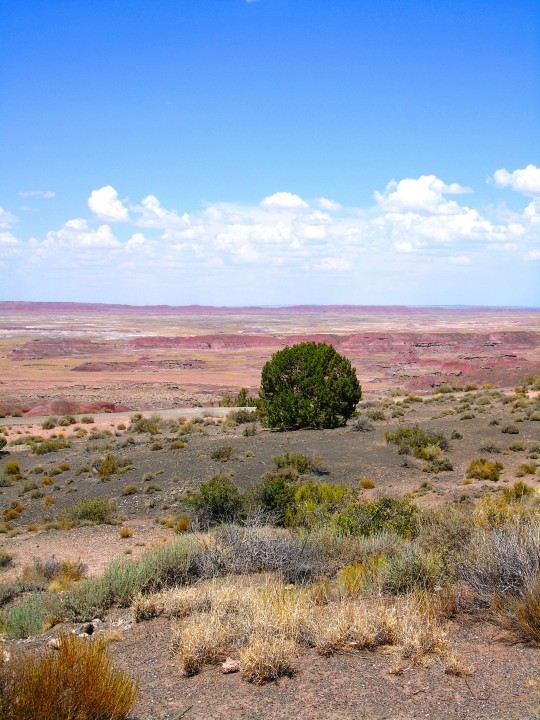
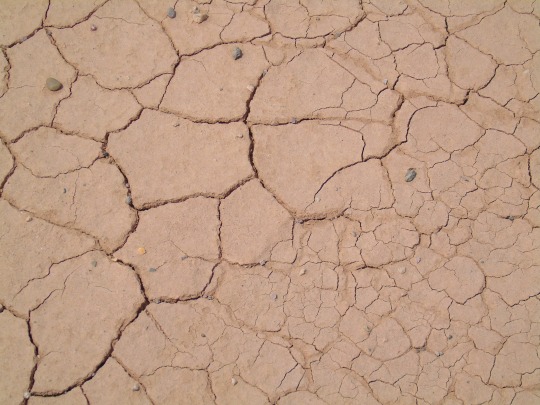

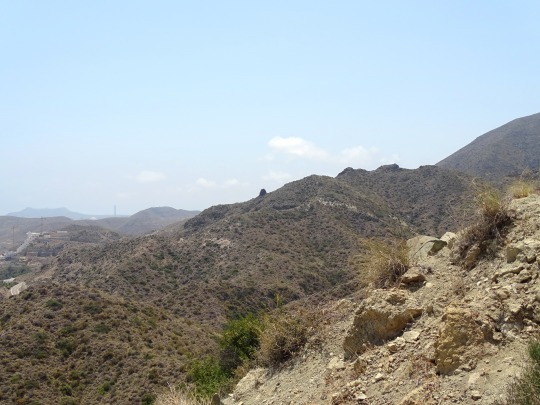
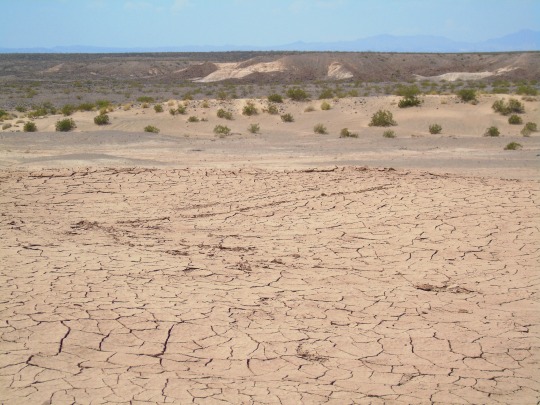

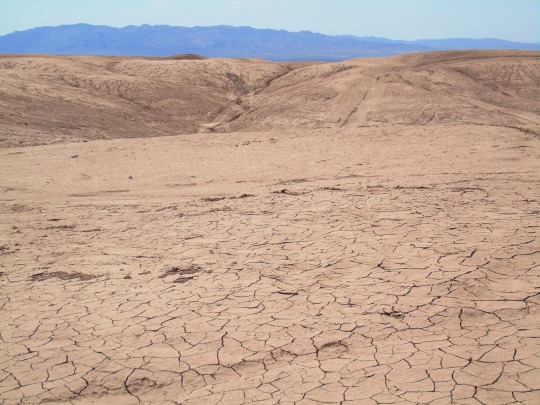

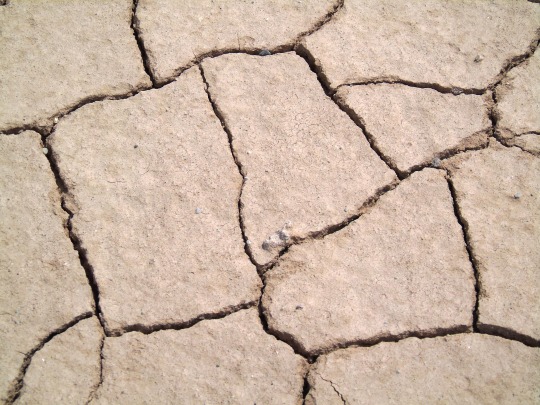

World Day to Combat Desertification and Drought
World Day to Combat Desertification and Drought arises on June 17 of every year. The primary purpose of the day is to highlight the ways to prevent desertification and recover from the drought. The day also aims to increase the visibility of the drylands issue on the environmental agenda. World Day to Combat Desertification and Drought is the perfect day to remind everybody that desertification can be efficiently tackled, that solutions are possible, and that key tools to this aim lay in strengthened community participation and co-operation at different levels.
“Without a long-term solution, desertification and land degradation will not only affect food supply but lead to increased migration and threaten the stability of many nations and regions. This is why world leaders made land degradation neutrality one of the targets of the Sustainable Development Goals.” – General Ban Ki-moon
History of World Day to Combat Desertification and Drought
In 1994, the United Nations General Assembly announced June 17 as the World Day to Combat Desertification and Drought. The assembly recognized that desertification and drought were the main global problems as they affect all regions of the world. The meeting also realized that joint action by the international community was required to combat desertification and drought, particularly in Africa. The States were asked to devote the World Day to promoting awareness of the necessity for international participation to combat desertification and the effects of drought and also the implementation of the Convention to Conflict Desertification. After then, the country parties to the UNCCD (United Nations Convention to Combat Desertification), stakeholders and non-governmental organizations to celebrate the World Day to Combat Desertification and Drought with some Worldwide activities on June 17 each year.
Themes of World Day to Combat Desertification and Drought
The past Themes of World Day to Combat Desertification and Drought are listed below
2003: International Year of Deserts and Desertification (IYDD).
2004: Social Dimensions of Desertification: Migration and Poverty.
2005: Women and Desertification.
2006: The Beauty of Deserts – The Challenge of Desertification.
2007: Desertification and Climate Change – One Global Challenge.
2008: Combating land degradation for sustainable agriculture.
2009: Conserving land and energy = Securing our common future.
2015: Attainment of food security for all through sustainable food systems.
2016: Inclusive cooperation for achieving Land Degradation Neutrality.
2017: Link between land degradation and migration.
2018: Land has true value. Invest in it.
2019: Let’s Grow the Future Together
2020: Food. Feed.Fibre. – the links between consumption and land.
2021: Restoration, Land, and Recovery.
2022: Rising from drought together.
How to celebrate World Day to Combat Desertification and Drought
On World Day to Combat Desertification and Drought, promotional events may include the distribution of awareness raising materials, like fact sheets, calendars, posters, and postcards, to educational organizations and the general public. The day also features the educational case studies, forums or discussions on drought and desertification, its associations with society and steps to minimize the problem.
Source
#Mirador Ermita Santa Cruz#Sierra Gador#Mojácar#Valle del Guadalhorce#Spain#España#Mojave Desert#California#Sitgreaves Pass#Arizona#Petrified Forest National Park#Painted Desert#summer 2014#2021#travel#World Day to Combat Desertification and Drought#17 June#landscape#countryside#DayToCombatDesertificationAndDrought#Great Basin#Nevada#tourist attraction#Highway 50#Lincoln Highway
0 notes
Text
Global Climate Change

The increase in the global mean surface temperature (GMST) is mainly attributed to to the alarming increase in the focus of greenhouse gases (GHG), such as carbon dioxide , nitrous oxide , methane (CH4) , sulfur dioxide (SO2) and chlorofluorocarbons (CFCs) mainly due to accelerated growth of industrialization worldwide (Singh, 2010). The the increase in GHGs occurred as a result of artificial interventions, such as coolants in industrial enterprises, excessive automobiles, production of energy-intensive agrochemicals, including fertilizers, which led to ozone exhaustion. Global GHG emissions reached 31.2% or more in 2016 compared to the GHG level, at an average annual increase of 0.9% since 2010 (UNFCCC, 2019).
According to the United Nations Framework Convention on Climate Change (UNFCCC), the sectors that have contributed to a the share of GHG emissions in 2016 is energy (34%), industry (22%), and transport (14%). In addition, about 23% of net GHG emissions were anthropogenic activities such as agriculture, forestry and other land uses representing 13% of global CO2 emissions, 44% of CH4 emissions and 82% of N2O emissions during the period 2007-2016. After fossil fuels, land use change, forest deforestation and degradation are the biggest emitters of CO2 (Baumert et al., 2009). The CO2 emissions are mainly responsible for 77% of global warming on the period of the last 100 years and is therefore the most significant aspect of GHG emissions (Climate analysis indicator tool, 2011). Khan et al. (2021) reported that energy consumption, CO2 emissions, labor, harvested land and the growth of fruit crops has a long-term co-integrated relationship. The long-term CO2 emissions and the rural population have a negative influence on production of fruit crops. They suggested that a 1% increase in the rural population and CO2 emissions will reduce fruit production by -0.59% and -1.97% in the long term.
The International Kyoto Protocol, established and adopted in 1997 to binding emission reduction commitments to industrialized countries, entered into force in 2005. In 2012, a second commitment in Doha An amendment was adopted and covered a new period until 2020.
Finally, in December 2015, the UNFCCC adopted the Paris deal which came into force in November 2016 with the result of developing a legal instrument applicable to all parties involved in GHG reduction emissions and which would be implemented from 2020. It was decided strengthening climate resilience and promoting the coherence of climate finance flows with a path to low GHG emissions. The increase in GMT in the relationship with industrial development implied the threat of desertification, water scarcity and land degradation. All these events can ultimately cause instability between crop yield and food supply, leading to food insecurities.
Such adverse climate change will also aggravate land degradation process by an increase in rainfall, floods, frequent droughts, heat stress, dry periods, strong wind, sea level rise and high tides, and thawing of permafrost with seriously devastating consequences. The improved air temperature at the surface of the ground, evapotranspiration and decrease in precipitation in interaction with climate variability and anthropogenic activities are mainly responsible for the increase in desertification in some arid areas, such as sub-Saharan Africa, parts of Eastern and Central Asia and Australia (UNFCCC, 2019). To combat desertification, activities such as climate change adaptation with mitigation and stopping the loss of biodiversity thanks to sustainable development is underway. Avoidance and reduction of desertification would improve soil fertility, increase carbon storage in soil and biomass, and bring benefits to agricultural productivity and food security. It is preferable to try to restore degraded land to better the use and reduce the pressure on the land. On the other hand, the IPCC has estimated that the sea level in 2100 will be 40 cm higher than it is today and nearly 80 million inhabitants of the coastal areas of Asia will be flooded. Most of the flooded areas will be in South Asia, especially in Bangladesh and India. Climate change has had three deleterious effects on agriculture and crop production. Farmers need to adopt different strategies (adaptation, mitigation and human interventions) to manage the climate change scenario and food security.
0 notes